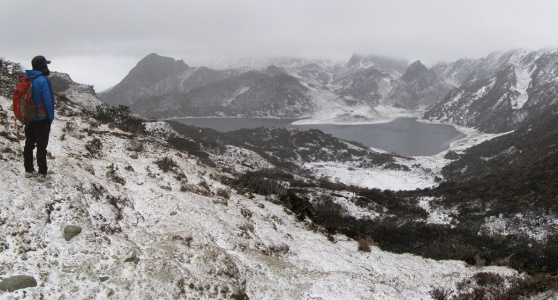The best seasons for trekking last from April to mid-June, and from October through November. The spring season is often cloudy while autumn has more days with clear blue skies. Winter trekking in Tiger Leaping Gorge has advantages, visitation is low and the color of the Jinsha River turns aquamarine in contrast to the brown of high runoff. If one can endure the cold, winter trekking in the high country may be feasible after several days of sunshine have melted the snow, but isolated deep pockets will impede pack animals.
The rainy season runs from July through September. During rainy periods, Tiger Leaping Gorge should definitely be avoided, as the risk of rockfall and mudslides increases. Pleasant hiking can prevail during several days of good weather.
You also may want to avoid the first weeks of May and October as these are Chinese national holidays. The area is overrun with trekkers, mountain climbers and other visitors.
Temperatures in the high country can drop well below freezing. Layers of warm clothing and wind and rain protection are essential. A -7˚ C sleeping bag should suffice when lodging at Base Camp. Blankets are available if more insulation is needed.
For weather reports of individual peaks, including Haba Snow Mountain, check out the Mountain Forecast website. You can tailor the report to different elevations, ranging from 2,500 meters to the summit.



 Socked in at Black Lake
Socked in at Black Lake